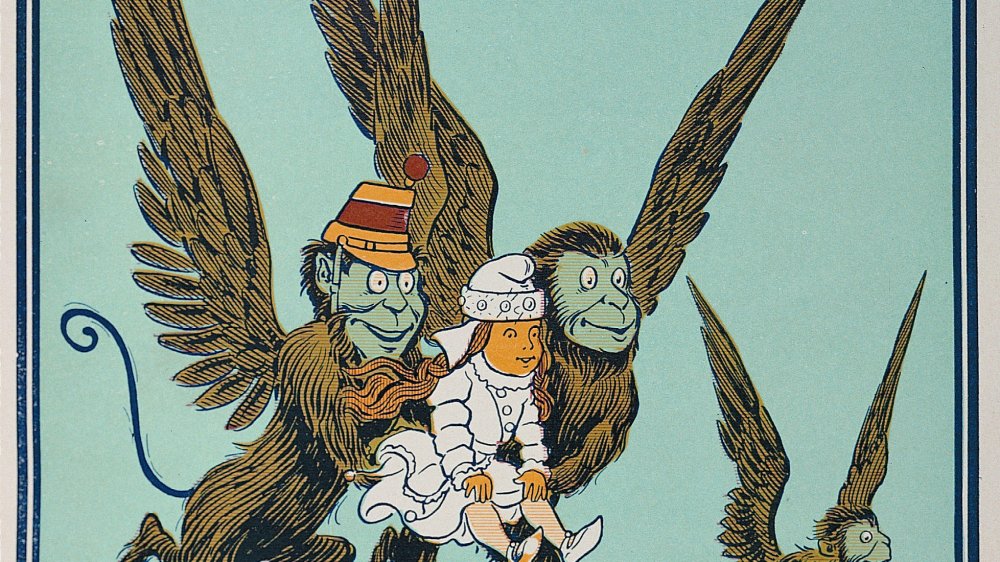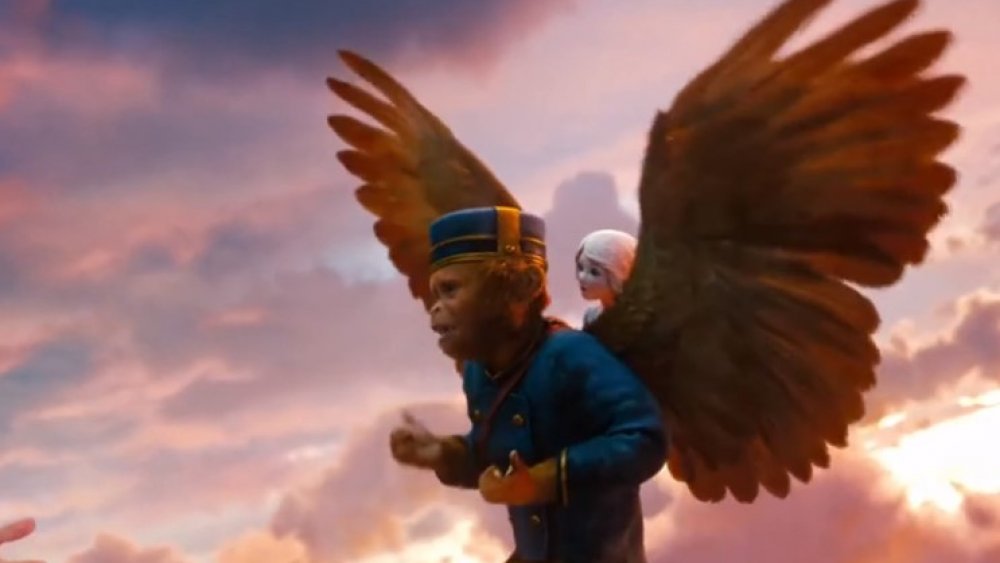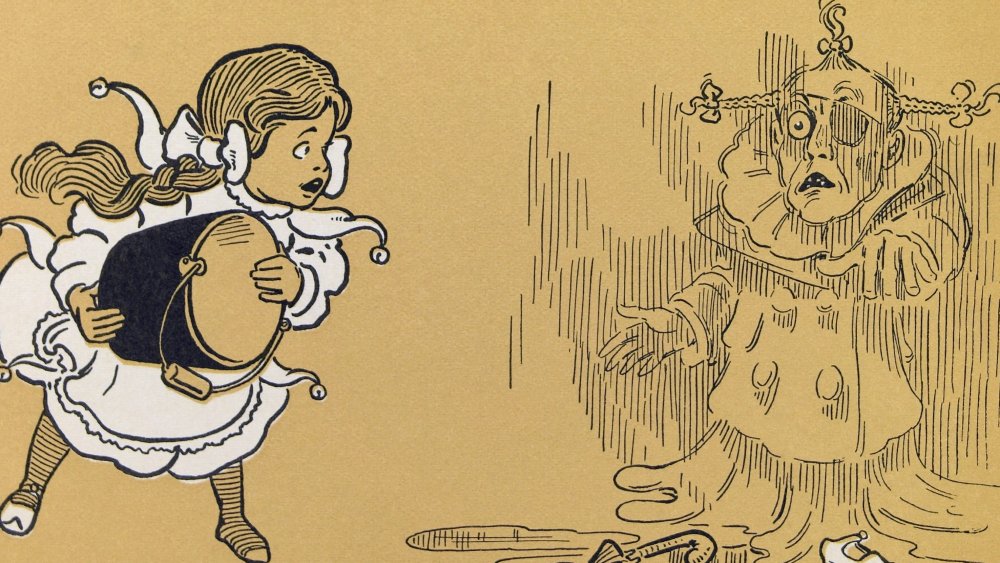The Real Meaning Behind The Wizard Of Oz's Flying Monkeys
The lights are up. The studio audience has taken their seats. Who's ready for another round of "Guess which beloved corner of your childhood is steeped in thick, syrupy racism?"
Today, we turn our loving gaze to L. Frank Baum, the creator of the magical land of Oz. Now permanently synonymous with the classic film, the world of Oz was, on the printed page, less of a musical romp through a colorful world than it was Game of Thrones by way of Wonderland. Through fourteen books, numerous short stories, and seven stage plays, Baum introduced readers to a twisted world of dismemberment, removable heads, and lobotomized cats. No, really.
Over the years, the public perception of these stories has shifted, and it's easy to understand why. There was a lot of saccharine sweetness sprinkled into things. How could the Munchkins have been an allegory for child factory labor with a gosh dang adorable name like "Munchkins?" No, really, they were.
The history of flying monkeys: Let's get uncomfortable
And then you get into the undertones of the flying monkeys, and everything gets really uncomfortable.
It's difficult to describe Baum's views on Native Americans without sounding flippant and insensitive, but the best way to describe them really might be "the most loving call for genocide in history." It's ... look, it's a lot.
When Baum first started working as a journalist, he wrote for a newspaper called the Aberdeen Saturday Pioneer providing columns and editorials. In these, he described Native Americans as "noble savages" who attacked pioneers out of "pure mischief." In one piece, he called for the extermination of all Natives, stating that after all of the atrocities the settlers had already put them through, it would be better to kill them all. It would be better, he claimed, to let them die as "Kings of the forest" than live subserviently.
So maybe we all take a breather here and let all of that soak in.
We represent the shady racist undertones guild
Here's where all of that pretty horrific language comes into play: in the Oz books, once freed from the power of the Witch, the leader of the flying monkeys describes their genesis to Dorothy. "...we were a free people, living happily in the great forest, flying from tree to tree, eating nuts and fruit, and doing just as we pleased without calling anybody "master." Perhaps some of us were rather too full of mischief at times, flying down to pull the tails of the animals that had no wings, chasing birds, and throwing nuts at the people who walked in the forest." If that language seems familiar to you, you're in good company, and it's been theorized that the Witch's henchmen were an allegory for the Plains natives, subjugated by an outside force and made to live as caricatures of a society not their own. Other interpretations have viewed them as a metaphor for African slaves and the labor union busters at the Pinkerton Detective Agency.
Now don't you wish you could click your heels together and go back to a place where you didn't know all that?


